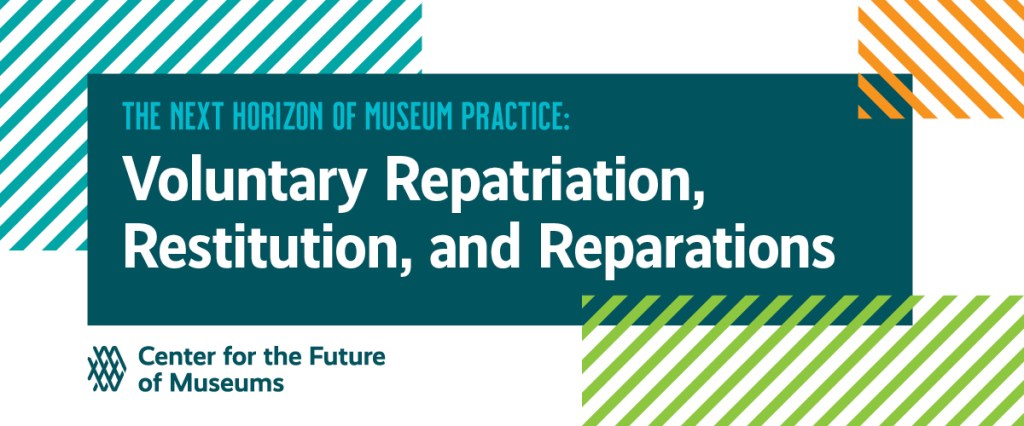The Next Horizon of Museum Practice: Voluntary Repatriation, Restitution, and Reparations

Collections lie at the heart of most museums, so naturally values regarding the ownership and control of collections are central to museum ethics. Recent developments at the global, national, and institutional level—including a wave of voluntary repatriation to descendant communities—suggest we may be at a tipping point regarding those values.
The American Alliance of Museums (AAM) has launched the Voluntary Repatriation, Restitution, and Reparations project to explore where these changes may lead us, decades hence. What “preferred futures” are envisioned by individuals representing descendant communities and by people working in museums? Which traditional standards and practices continue to have value, and which might need to change? What barriers exist to moving from the current state of museums and society to a desired future state? How might we overcome these barriers to create a more just and equitable world?
The Alliance’s Center for the Future of Museums will use the International Futures Forum’s Three Horizons framework to guide the project’s three stages:
Stage 1 documents the trends and events that have created the current state of museum practice in the report, The First Horizon: Understanding the State of Voluntary Repatriation, Restitution, and Reparations Today. Download your free copy and use the report’s worksheet to begin framing your thoughts on the evolution of museum practice.
Stage 2 engaged voices from descendant communities and the museum field to envision the Third Horizon—preferred futures for this area of practice—via a collection of 15 published papers. These opinion pieces, academic papers, and works of future fiction explore how museums might create new relationships with descendant communities, and re-envision their responsibilities as stewards of tangible and intangible heritage.
Stage 3 will help the field navigate the complexities of realizing these preferred futures by employing foresight techniques to help the museum sector, as well as individual organizations, identify how to navigate the Second Horizon, a transitional period of disruptive change, to reshape museum practice.
This project is generously supported by
![]()